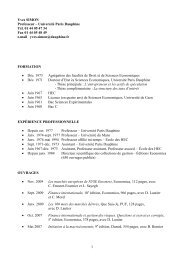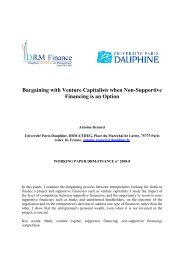Corporate governance and earnings management ... - CEREG
Corporate governance and earnings management ... - CEREG
Corporate governance and earnings management ... - CEREG
Create successful ePaper yourself
Turn your PDF publications into a flip-book with our unique Google optimized e-Paper software.
The first German law concerning goodwill was an emergency law of July 19, 1931. It<br />
added a new article to the Commercial Code (article 261) prohibiting recognition of internally<br />
generated goodwill as an asset, <strong>and</strong> (merely) allowing acquired goodwill to be recognized as<br />
such only on condition it was then amortized by “appropriate annual amortization charges”.<br />
According to Greve (1933, p. 35) <strong>and</strong> Take (1939, p. 116), this law simply gave formal<br />
expression to the dominant doctrine of the time.<br />
The measures introduced in 1931 were included without amendment in the law (AktG) of<br />
1937 (article 133, paragraph 5), <strong>and</strong> then almost without amendment in the law (AktG) of<br />
1965 (article 153, paragraph 5). The only noteworthy difference is that in 1965, the law<br />
stipulated that the systematic amortization against goodwill entered as an asset must be at<br />
least one-fifth annually. This remained applicable until 1985.<br />
This very strict position (purely static in nature) st<strong>and</strong>s out all the more because of its stark<br />
contrast with the approach taken by the tax administration. As early as the late 19 th century,<br />
the Preussische Oberwaltungsgericht refused systematic amortization of goodwill, <strong>and</strong><br />
dem<strong>and</strong>ed a “real-value reduction” (Rechtmann, 1926, p. 128). In 1930, the Reichsfinanzhof<br />
(the Reich’s financial court) stated that goodwill was a “living thing” <strong>and</strong> unlike commercial<br />
law, refused any decrease in book value not due to actual loss of value (Greve, 1933, p. 75-<br />
79). On the same lines, the Reichstfinanzhof issued a ruling on July 29, 1931 that goodwill<br />
“does not lose value regularly over time” <strong>and</strong> cannot therefore be amortized, only “written<br />
down if necessary”. The tax law of 1934 confirmed <strong>and</strong> even reinforced this position: in<br />
replacing the concept of gemeine Wert (sales value) with the concept of Teilwert (value in<br />
use) for impairment testing, it made it even more difficult for the taxpayer to prove loss of<br />
value. Take (1939, p. 120) calls this a “probatio diabolico” (impossible evidence).<br />
To justify non-amortization, German tax courts invoked the “exchange theory”<br />
(Austauschtheorie) that there was no boundary between acquired <strong>and</strong> created goodwill,<br />
meaning that any loss of value in acquired goodwill could be offset by new created goodwill<br />
23



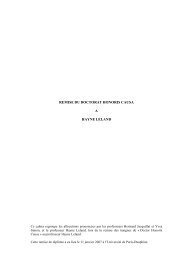

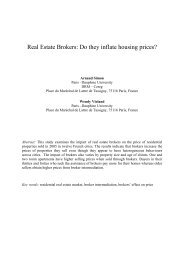
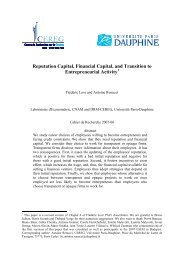

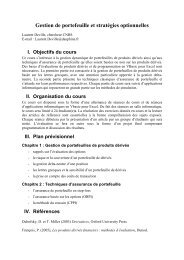


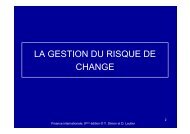
![& 6 ] ^ F ]^ - CEREG - Université Paris-Dauphine](https://img.yumpu.com/33326502/1/184x260/-6-f-cereg-universitac-paris-dauphine.jpg?quality=85)

